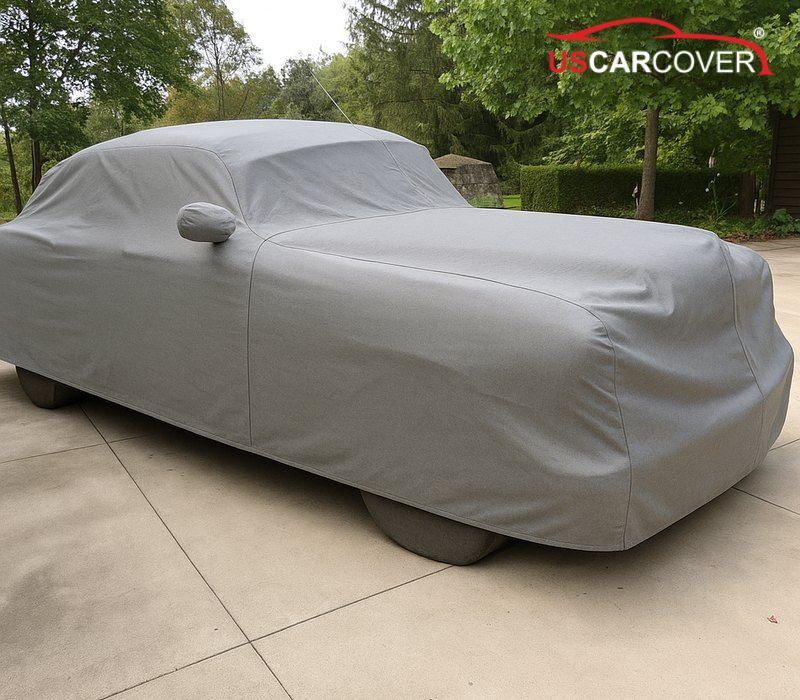
A Hudson car cover is not a random tarp tossed over the car to keep off dust. For classic Hudson step-down bodies cared for across the United States, it is more like a second skin that lets surfaces breathe, keeps the car still in wind, turns contact into a cushioned touch rather than abrasion, and makes rainwater curl into droplets that roll away quickly. If you have ever walked into a garage or open carport after a rainy night and seen bright white rings at the glass edges, tiny pitting on chrome, faint swirl marks that show up under lights, or a slight musty odor inside, you know how frustrating and costly this can be. The ironic part is that most of the damage does not happen while driving. It happens quietly while the car sits. This article goes straight to those pains, analyzes the root causes in plain physics and environment, and shows how a correctly built Hudson car cover cuts off the damage chain at the outermost layer so you can preserve originality and sharply reduce emergency detailing costs.
Related Articles: Honda car cover: rain resistant, strong UV protection, cooler cabin, durable paint and interior
The pains of Hudson owners in the U.S.: small accumulations that become big bills and why restoration costs keep climbing

On the surface, what bothers us looks minor: a few slow-drying water traces, a patch of fine swirls, or a faint musty smell after a wet night. Behind that is a weather machine that never rests. Parked outdoors or in a breezy carport, the body cycles through two thresholds every day: dew point and solar radiation. Near dawn, surfaces hit the dew point. Vapor condenses into droplets and settles at glass edges and metal lips. By midday, solar radiation heats the surfaces, drives off moisture, and accelerates polymer aging. Day after day it adds up. Urban fine dust becomes abrasive grit. Light wind makes a loose cover puff, amplifying friction. Road salt in the Snow Belt, sea salt in coastal air, and slightly acidic rain in some regions further stress chrome and metal edges. The result is a repeating calendar of fixes: glass decontamination, swirl correction, even small rechrome jobs. Each intervention trades away a bit of originality.
The key is not a better fire drill at the end but cutting the damage mechanisms at the start. A Hudson car cover with an ultra soft liner, a snug custom fit, a breathable core, and a rain-beading outer face removes the conditions those four risks need to thrive. Financially, that lowers the frequency of expensive services and extends the youthful look of paint, glass, chrome, and interior.
Related Articles: Hillman car cover: preserve value and extend vehicle lifespan, reduce repair and maintenance costs
Hudson surfaces are sensitive: understand their “personality” to protect them right from day one

Hudson is captivating because of its proportions, flowing curves, large curved glass, and generous chrome. That beauty arrives with a set of sensitive materials that, when misunderstood, are easy to harm while we think we are protecting them.
Classic lacquer or nitro finishes are thin and soft. Their depth and glow are unique, but they show fine swirls readily when exposed to repeated friction, especially in wind-washed zones like the A pillars and shoulder lines. Chrome and steel-backed trim shine like a mirror but dislike salty moisture. If a thin layer of salty wetness is pressed against chrome for hours, pinpoint corrosion can begin at trim corners, handles, and grille edges. Large curved glass looks gorgeous but naturally encourages water to settle at edges overnight and leave mineral rings. Cloth, leather, and wood veneer interiors are sensitive to UV and swings in heat and humidity. That is why a useful Hudson car cover must speak four “languages” at once: cushioned contact so paint is not abraded, a stable fit so fine dust does not travel back and forth, real breathability so moisture escapes, and a surface that sheds water and reduces heat load so wet and hot exposure time is shorter.
Real scratch protection
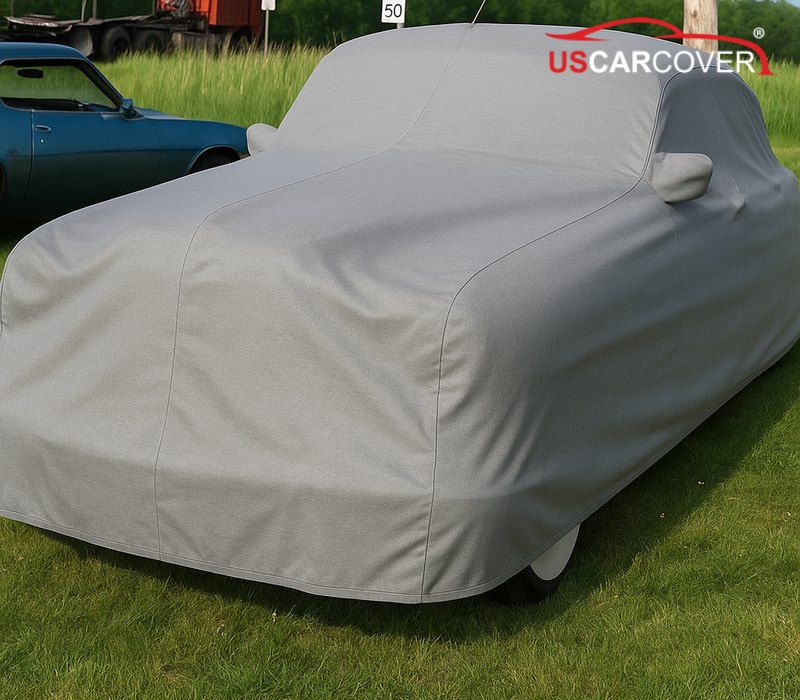
Fine swirls rarely come from a dramatic incident. They usually come from how we use the cover. The mechanism is simple but sneaky: a thin film of fine dust on panels, a cover that does not match body geometry so it creates air pockets, a light breeze that makes the cover pulse, and the dust becomes abrasive grit, leaving halos under inspection lights. To stop this, a Hudson car cover needs three conditions at the same time.
First is an ultra soft liner. This is the interface with paint. A proper liner feels velvet-smooth to the fingertips, does not fuzz over time, and does not bleed dye when damp. When you pull the cover in the natural fall direction, the liner turns lateral force into a gentle glide instead of dragging grit across paint. Second are recessed seams and soft hems. Any hard edge is a micro blade if repeated long enough. At curved glass edges, a single sharp hem can print a dull line after a windy season. Recessed stitching and soft hems bury the edge and remove the printing risk. Third is a custom-fit form. Hudson body geometry is unlike modern cars. Mirror pockets must sit exactly where they belong, and tail drop must match sedan, club coupe, or fastback shapes. When geometry locks, the cover stays still, fine dust loses mobility, and the soft liner can truly perform.
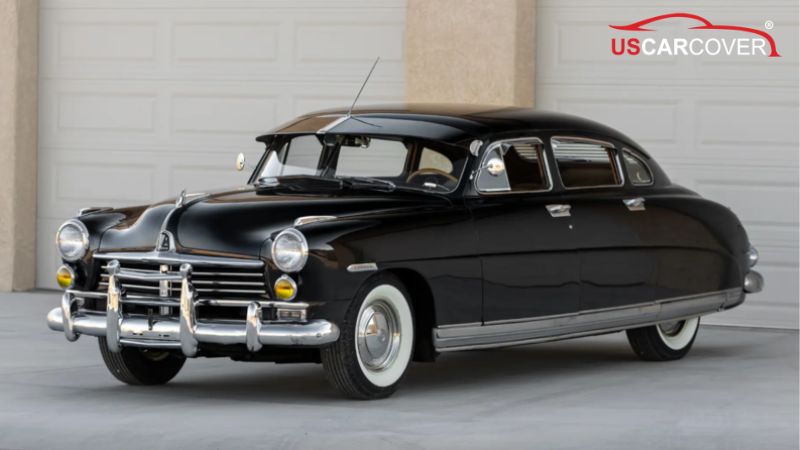
With all three present in one Hudson car cover, hotspots like the A pillars, glass edges, and shoulder lines go quiet. Each time you lift the cover, the surface still looks flat and deep without those distracting halos.
Related Articles: Graham car cover: long-term storage solution with ultra soft liner, recessed seams, and breathability
Rain beading and fast moisture release
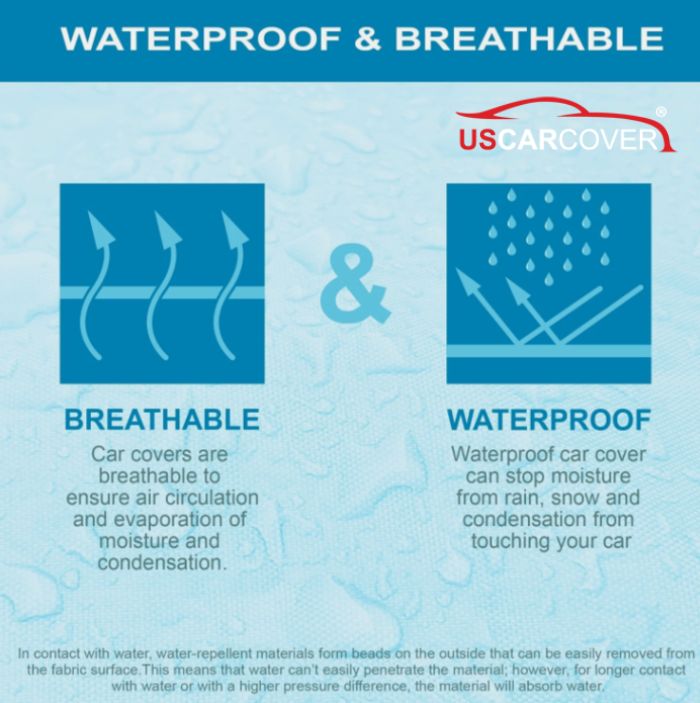
Rain makes things wet. What costs money, though, is not just rain. It is wet time and pressed moisture. Overnight, temperatures fall. Surfaces hit the dew point and vapor condenses into droplets. If the cover is an airtight sheet, droplets are trapped between fabric and paint, pressing moisture against glass and metal lips. In the morning, the faint musty smell and white rings at glass edges are the signatures of that process.
A Hudson car cover breaks this loop with two complementary mechanisms. On the outside, the finish makes water bead and roll, using body slopes so droplets do not sit long enough to deposit minerals. Inside the structure, a micro-porous core lets vapor diffuse upward so the underside stays dry over days instead of drying for a few hours and then going damp again. Together they produce visible results: fewer mineral frames on glass, cleaner metal lips, brighter chrome, and no musty cabin after wet nights.
One small habit multiplies the effect. After a long rain, open the Hudson car cover for a few minutes to exchange air, wait until the surface is dry, then reinstall. That brief breath is enough to push trapped moisture out of the interface without turning use into a complicated routine.
Long-lasting chrome shine: how to deprive salty moisture and road salt of their habitat

Chrome and steel-backed trim are the face of a classic Hudson, and their weakness is textbook: salty moisture. On the coast, salt micro particles hang in the air. In the Snow Belt, road salt is everywhere in icy weather. When salty wetness is pressed against chrome for long hours, pinpoint corrosion starts quietly, first at wind-facing corners, handles, and grille edges.
That is why a Hudson car cover must shorten wet time, avoid trapping salty moisture, and maintain stable aerodynamics around the body. A beading outer face moves water away quickly from ridges and trim bases. A breathable core keeps salty vapor from being held against the surface. A snug form with sensible anchors prevents the cover from puffing, which keeps salt dust from rubbing. Each time you remove the cover, a gentle shake knocks off salt dust before storage, which closes the protection loop. Over time, the difference is obvious: plating keeps its deep, even shine with fewer tiny pits that would otherwise need expensive correction.
Related Articles: How to choose a GMC car cover for Urban areas, the Sun Belt, the Snow Belt, coastal regions, and high-wind plateaus
Fewer water spots on glass: when curved edges stop being an overnight “water trap”
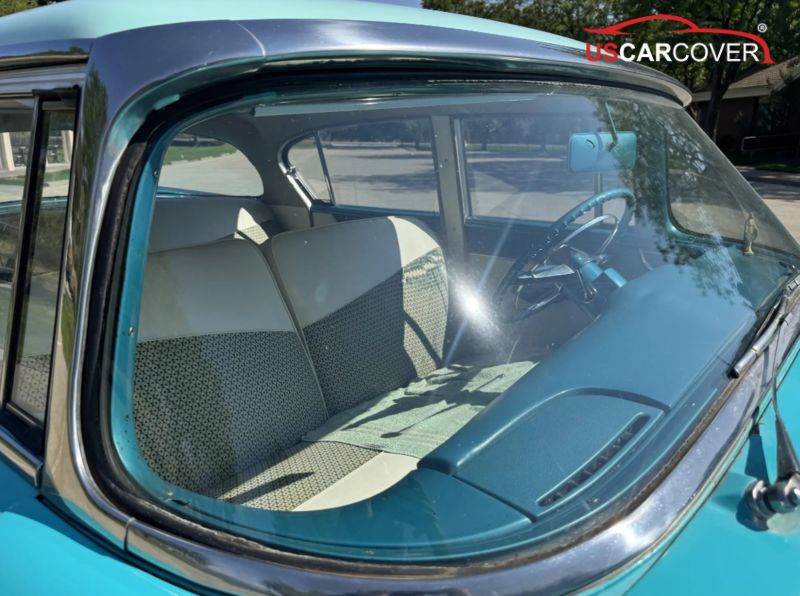
Curved glass is a design highlight of Hudson, but it is a trap for condensation. Water naturally runs toward edges and sits there longer overnight. If left alone, it evaporates slowly and mineral ions remain, forming stubborn white rings. Aggressive removal can haze the glass microscopically.
A Hudson car cover with a beading outer face and a breathing core changes that story. Condensation has less time to sit, and the underside is not a pressure zone that forces moisture to linger at the edge. With a snug form, recessed seams, and soft hems, the cover touches glass like a gentle placement rather than a hard edge. The glass ages more slowly. You will see fewer edge rings, less glare when driving into the sun, and less need for heavy chemicals.
Choose by U.S. context: the same Hudson car cover delivers real value only when used in the right place

There is no single cover that wins everywhere. Results turn excellent when you localize your Hudson car cover use to climate and daily parking habits. In tree-lined cities, the enemies are sap, bird droppings, and fine dust. A breathable, light, quick-handling cover with a soft liner and close fit makes daily use easy, so contaminants do not get to settle or soak in. In the Sun Belt, radiation and heat shock are the primary risks. A Hudson car cover with a light, reflective face and a breathing core reduces heat and avoids moisture buildup after a quick shower. In the Snow Belt, long salty wet conditions demand strong beading to shorten wet time, micro-porous venting to let moisture escape, and stable anchoring so the cover does not balloon. At the coast, the biggest mistake is choosing airtight materials because they seem safe. Airtight makes salty moisture press against surfaces. Let your Hudson car cover breathe and shake off the surface gently each time before storage to drop salt particles outside the bag. On high-wind plateaus, wind is the engine of micro vibration. A custom fit, recessed seams, soft hems, and underbody anchors keep the cover still and neutralize the “dust plus ballooning” swirl mechanism.
When you begin using a Hudson car cover in this “right place, right rhythm” style, results appear naturally: the car looks cleaner every time you lift the cover, the cabin smells fresher, glass edges show fewer water frames, chrome looks deeper, and paint shows far fewer fine swirls.
Related Articles: Geo car cover: reduce maintenance, protect 90s dashboards and plastics, and preserve resale value
Where to buy a Hudson car cover to “get it right the first time”
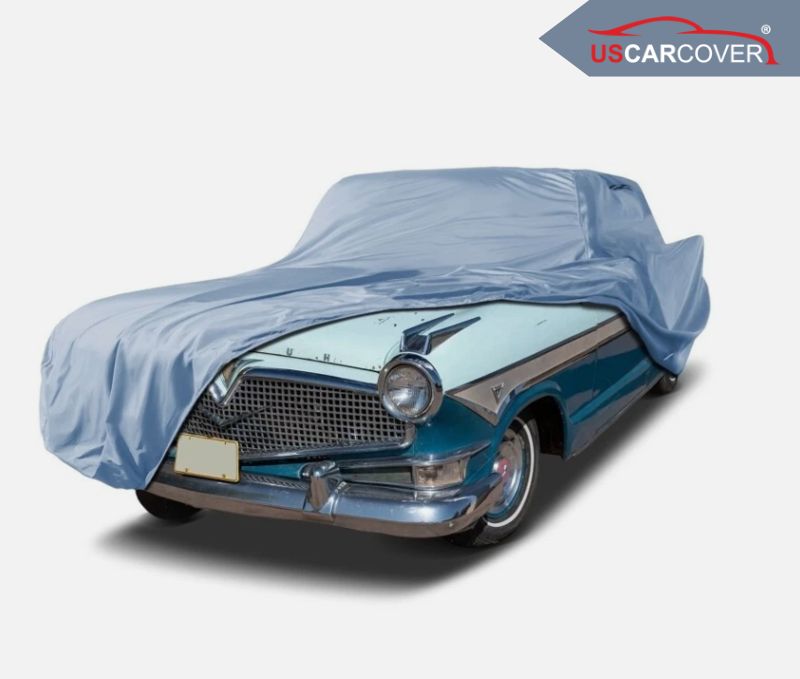
A cover only delivers value when you use it daily without overthinking. That comes from a seller who understands U.S. climates and parking habits, offers Hudson car cover forms custom-fit by model and year, separates indoor and outdoor needs clearly, and explains in plain terms how beading, breathability, soft liners, recessed seams, and stable anchoring work together. At US Car Cover, you can look up your Hudson, choose a Hudson car cover for humidity-controlled garages or for carports and open lots, and get advice matched to Sun Belt, Snow Belt, coastal, or high-wind regions. Once the form is correct, the liner soft enough, the core breathing, and the outer face shedding water well, each install and removal is quick, clean, and tidy. More importantly, the Hudson car cover becomes a natural habit rather than an extra chore, and protection compounds day by day.
Related Articles: Genesis car cover: extend vehicle lifespan by blocking dust, leaves, UV, and heavy rain
Five qualities, one mechanism, one goal
Everything a proper Hudson car cover brings can be summarized in a short formula. The five qualities are scratch protection, rain beading, fast moisture release, long-lasting chrome shine, and fewer water spots on glass. The single mechanism is a steady coordination of an ultra soft liner, recessed seams with soft hems, a custom-fit form, a breathable core, and a beading, reflective outer face. The single goal is to slow every pathway of surface aging while the car sits. That way, each time you lift the Hudson car cover, the car still looks as fresh as yesterday. This is a small investment compared with repeated correction, decontamination, or rechrome bills, but the benefits compound across seasons. When you treat the Hudson car cover as the car’s second skin and use it in the right places, you have already walked most of the path to preserving value and the joy of owning a classic
